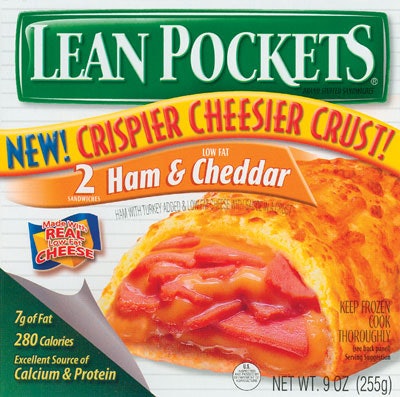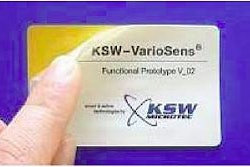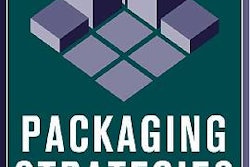Packaging is an issue as the Food and Drug Administration bites off another nutrient labeling issue just after food marketers swallowed the FDA’s trans fat labeling rule that became effective on January 1, 2006.
The FDA proposed in late November a formulation for allowing companies who sell certain primarily frozen, snack-type meals—things such as burritos, sandwiches, pizzas, etc.—to label those products as “lean.”
The FDA decision to move forward on the lean snack issue is apparently related to the agency’s desire to keep its healthy food focus in the wake of at least one trans fat decision. The issue was raised in an April 22, 2004, petition from Nestlé Prepared Foods, manufacturer of Lean Cuisine and other quick-meal products such as Hot Pockets.
While Nestlé believes a lean label will support healthy eating habits, the FDA is worried that consumers will pop two or more small lean Hot Pockets into their mouths at one sitting, making for something less than a healthy meal. That is where packaging comes in.
“Consequently, the agency is concerned that rather than eating just one of the portions provided, thus limiting portion size, consumers may instead consume the entire package, thus doubling their caloric and nutrient intake as opposed to lowering it,” the agency said in the Federal Register notice proposing the claim.
Loretta Ivany, manager of communications/media for Nestlé USA, declines to comment on whether Nestlé might make some packaging changes to Hot Pockets and its other products to reduce the chance of overeating.
Lean limits set
Companies like Nestlé that sell frozen and fresh seafood, game meat, meal, and main dish products that weigh in at more than 6 oz per serving can already label than as lean if they contain less than 10 g of total fat, 4.5 g or less of saturated fat, and less than 95 mg cholesterol per reference amount customarily consumed (RACC), which is typically per 100 g.
Meat and poultry products regulated by the U.S. Department of Agriculture can also make a lean claim if they meet similar markers. Nestlé’s Lean Cuisine brand meets USDA standards for lean claims. But the company is anxious to be able to use a lean label for its FDA-regulated Hot Pockets products that fall into a “under six-ounce-per-serving” category for which lean claims have not been approved.
These kinds of products fall into an FDA category called “mixed dishes not measurable with a cup.” They are typically sandwiches or what Nestlé calls “handlheld portable” foods that are less than 6 oz per serving.
Nestlé argues the category did not exist in 1993 when the FDA and USDA lean rules were adopted. Moreover, because of the country’s lifestyle habits, this category of food is booming; the increase in consumption between 1999 and 2004 was 43%, according to AC Nielsen Syndicated Data.
Other products, too
Besides Nestlé products such as Hot Pockets, the company’s petition argued a lean claim could also be used by such products as Red Baron Pizza, Bagel Bites, El Monterey Burritos, and Weight Watchers Smartwiches. Robin Teets, senior manage for marketing and public relations, Heinz North America, did not respond to phone calls and e-mails asking about Heinz’s position on the Nestlé petition.
Stephanie Childs, spokeswoman for the Grocery Manufacturers of America, says “GMA has not taken a position on this issue. Additionally, because we represent Nestlé, we cannot comment on their petition.”
Regardless of the support it has, announced or otherwise, from other food packagers, Nestlé argues that it is unfair that an FDA portable food product cannot carry a lean label while a very similar USDA product can. For example, a food such as a starch-based wrap with chicken, broccoli, and cheddar cheese that is subject to USDA regulation is able to bear a lean claim under USDA regulations. But a similar wrap with just broccoli and cheese and without chicken, thus not subject to USDA regulation, could not bear a lean claim under current FDA regulations.
Interim lean label
The FDA proposed rules issued in November suggests criteria for handheld foods wanting to use a lean label. That would be 8 g total fat, 3.5 g saturated fat, and 80 mg cholesterol per 100 g. The FDA said: “The proposed nutrient criteria are less restrictive than the other options considered and would potentially allow more foods for increased consumer choice.” Nestlé says that criteria is fine with them.
Moreover, even before the FDA finalized the rule, Nestlé will be able to start putting a lean claim on its products. That is because the FDA announced it intends to consider the exercise of its enforcement discretion on a case-by-case basis when the lean nutrient content claim in food labeling is based on the definition in this proposed rule, according to Mary Marr, regulatory manager, Nestlé’s handheld food groups.
Sebastian Cianci, an FDA spokesman, says the interim approval to use a “lean” label, in advance of a final rule, “happened occasionally, and is not unprecedented.” He adds that the FDA allowed companies to put trans fat content on their labels prior to that final rule going into effect.
That deadline was January 1, 2006, when marketers had to list the trans fat content of their products in the Nutrition Facts panels on all labels. Even products that contain no fat or no trans fat are required to list the absence of trans fat on the label, unless the product qualifies to bear a “simplified Nutrition Facts” that has a 0 value for total fat and does not declare a value for saturated fat.
The FDA considered coming up with a maximum trans fat value to include in the lean requirement but decided against it. Instead, the agency has issued an advanced notice of proposed rulemaking (ANPRM) to solicit comments on establishing a variety of free-standing trans fat nutrient content claims and some trans fat maximum levels that could come into play for current nutrient content claims for saturated fatty acids and cholesterol.
























